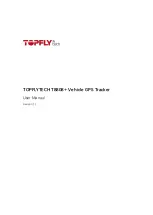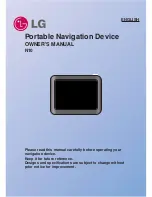
14
Z-Sensor and Z-Eurocard Operation Manual
Antenna
The Z-Eurocard provides DC power on the center conductor for a LNA on the
antenna cable. No external source is required to power a 5 Vdc LNA. A LNA
requiring greater than 5 Vdc may be used by connecting an external power supply to
LNA POWER and LNA GND on the 64-pin connector. No jumpering is required as
long as the voltage is higher than 5 Vdc. The maximum external LNA voltage is
15Vdc.
The gain of the LNA less the loss of the cable and connectors should be between 20
and 45 dB. Connect the antenna cable directly to the antenna connector on the Z-
Eurocard. Antenna cables exceeding 15 dB of loss require a line amplifier. A Line
Amp (p/n 700389) compensates for 20 dB of cable loss. The Line Amp has N-type
connectors to connect to the antenna cable.
Power Requirements
The Z-Eurocard requires 5 Vdc, regulated ±5% at the board connector and consumes
7.5 watts.
Environmental Specifications
The operating temperature range of the Z-Eurocard is -30
°
C to +70
°
C; storage
temperature is -40
°
C to +85
°
C.
The operating humidity range is 0 to 95%, non-condensing.
The Z-Eurocard is designed to operate while being subjected to the random vibration
test outlined in MIL-STD-810E Method 514.4, as well as a machine control vibration
test consisting of 5g for 20 hours in each orthogonal axis.
Mounting Requirements
The Z-Eurocard should be mounted using, as a minimum, the four 0.110” holes in the
corners of the board, on standoffs as described under the heat-sink requirements (refer
to “Heat-Sink Requirements” on page 14). In high vibration applications, the two
center 0.110” holes should also be used. The maximum diameter for the center
standoffs is 3/16”.
This board can also be provided in a true Eurocard format with a 96-pin 3-row
connector. The center row of pins is not loaded, for electrical compatibility, and the
side edges are milled down to 0.062” to allow insertion into a card rack. The length of
the true Eurocard board is 6.300”; all other dimensions are the same as the standard
Z-Eurocard.
Heat-Sink Requirements
The Z-Eurocard has two large quad-flat-pack ICs on the bottom side that require a
heat-sink to keep them within their safe operating temperature range. If you wish to
Содержание Z-eurocard
Страница 4: ...iv Z Sensor and Z Eurocard Operation Manual...
Страница 8: ...viii Z Sensor and Z Eurocard Operation Manual...
Страница 10: ...x Z Sensor and Z Eurocard Operation Manual...
Страница 18: ...8 Z Sensor and Z Eurocard Operation Manual...
Страница 34: ...24 Z Sensor and Z Eurocard Operation Manual Figure 2 11 Z Sensor Development Kit B...
Страница 35: ...Equipment 25 Equipment Figure 2 12 Z Eurocard Development Kit A...
Страница 36: ...26 Z Sensor and Z Eurocard Operation Manual Figure 2 13 Z Eurocard Development Kit B...
Страница 44: ...34 Z Sensor and Z Eurocard Operation Manual...















































